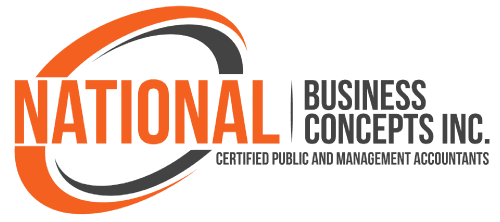The importance of understanding your financial statements.
Financial statements, i.e., income statement, balance sheet, statement of owners’ equity (or shareholders’ equity), and cash flow statements, reveal the heartbeat of a business. Or it could be said that a business manager finds these statements indispensable in assessing the pulse of his company.
Income Statement
The income statement, also known as, the profit and loss statement, summarizes a business’s financial performance over a specific period. It details revenue generated, expenses incurred, and the resulting net profit or loss. Businesses analyse this statement to assess profitability, identify trends, and make strategic decisions regarding pricing and cost management. The income statement consists of key components such as total sales, operating costs, gross profit, and net income. And it shows key indicators such as:
· Earnings before interest and taxes (EBIT,) is a company’s operating profitability before deducting interest and taxes; It helps assess core business performance without the impact of financing decisions or tax policies. EBIT is used to evaluate efficiency and operational success.
· Earnings before interest taxes depreciation and amortization (EBITDA,) aka income before interest and taxes and depreciation and amortization, adjusts EBIT by adding back depreciation and amortization, offering insight into cash-generating ability. It is the preferred metric when evaluating businesses with large capital expenditures.
· Earnings before taxes (EBT,) is a metric that reflects the company’s earnings after accounting for interest expenses but before taxes. It’s useful for comparing companies operating in different tax environments, providing a clearer picture of pre-tax profitability; It is especially useful in preparing income tax returns.
Income statement ratios help analyse a company’s profitability, efficiency, and financial performance, such as the gross profit margin: gross (profit/revenue) x 100—measures profitability after deducting the cost of goods sold; operating profit margin: (operating profit)/revenue—indicates how efficiently a company manages its operation; net profit margin: (net profit)/revenue—shows the portion of total revenue that translates into profit after all expenses; earnings per share (EPS): (net income – preferred dividends)/(weighted average shares outstanding)—indicates how much profit is attributable to each share of common stock; interest coverage ratio: (operating income)/(interest expense)—assesses a company’s ability to cover interest payments; plus other ratios.
Balance Sheet
The balance sheet provides a snapshot of a company’s financial position at a given point in time. It consists of three key components: assets, liabilities, and shareholders’ equity. Assets include cash, inventory, equipment, and accounts receivable, while liabilities encompass loans, accounts payable, and other debts. Shareholders’ equity represents ownership value, including retained earnings and additional investments. The balance sheet follows the equation: assets = liabilities + equity, ensuring balance in financial reporting. In analysing a balance sheet a manager would consider several balance sheet ratios including the current ratio—measures liquidity and ability to cover short-term debts; quick ratio—evaluates liquidity excluding inventory, showing immediate financial flexibility; debt to equity ratio—indicates leverage (amount of borrowing) and financial risk (exposure); working capital ratio—determines short-term financial stability; and the return on assets—net income/total assets.
Statement Of Owners’ Equity
The statement of owners’ equity, typically included within the balance sheet as a section but sometimes prepared separately in a “Statement of Changes in Equity,” reflects changes in a business’s equity over a specific period. It starts with the beginning equity balance, and then incorporates net income or losses, owner withdrawals, dividends (for corporations), and additional contributions. This financial statement helps business owners track how retained earnings grow or shrink based on profitability and distributions. Understanding equity movement is essential for assessing company value, financial stability, and investment attractiveness. For corporations, shareholders use this statement to evaluate returns on investment. A strong equity position signifies financial resilience, providing businesses with greater flexibility in securing financing or reinvesting in operations.
Cash Flow
The cash flow statement provides insight into a company’s liquidity, financial health, and cash management by tracking its inflow and outflow of cash over an accounting period. It is divided into three sections: operating activities, investing activities, and financing activities. Operating cash flow reflects revenue generation and expenses, while investing activities include asset purchases or sales. Financing cash flow records loan repayments, dividends, and funding sources. This statement is crucial for assessing liquidity and ensuring the business can meet short-term obligations. Unlike the income statement, which includes non-cash transactions, the cash flow statement focuses solely on actual cash movement. Businesses rely on it to maintain financial stability and prevent cash shortages. Metrics used to analyse the cash flow statement include the operating cash flow ratio—(operating cash flow)/(current liabilities): measures a company’s ability to cover short-term obligations using cash generated from operations; free cash flow—(operating cash flow) – (capital expenditures): shows how much cash is available for expansion, debt repayment, or dividends after essential investments; cash flow to debt ratio—(operating cash flow)/(total debt): indicates a company’s ability to pay off debt using operational cash flow; and cash flow margin ratio—(operating cash flow)/sales: assesses cash efficiency in generating revenue.
Overall
Understanding the income statement helps managers recognize, profitability—revenue and expenses—, financial strengths and weaknesses, tax compliance and legal obligations, optimize operations, and improve efficiency. Investors and lenders also rely on it to evaluate a company’s earning potential and sustainability. By analysis of the balance sheet business managers can assess liquidity, leverage, and solvency, helping them make informed decisions about financing, operations, and long-term sustainability. Shareholders can use the statement of shareholder’s equity to evaluate returns on investment. A strong equity position signifies financial resilience that can provide businesses with greater flexibility in securing financing or reinvesting in operations. Businesses rely on the cash flow statement to maintain financial stability, prevent cash shortages, and remain solvent. Unlike the income statement, which includes non-cash transactions, the cash flow statement focuses solely on actual cash transactions.
Conclusion
Financial statements—income statement, balance sheet, statement of owners’ equity, and cash flow statement—are essential for assessing a business’s financial health. The income statement tracks revenue, expenses, and profit over time, showing overall performance. The balance sheet provides a snapshot of assets, liabilities, and equity, revealing financial stability. The statement of owners’ equity reflects changes in equity, showing how business value evolves. The cash flow statement monitors cash inflows and outflows, ensuring liquidity. Understanding these statements helps managers set realistic goals, track performance, and make informed decisions. Without them, financial instability and poor strategic planning can threaten business success.
By Richard Thomas
Next: Part II


